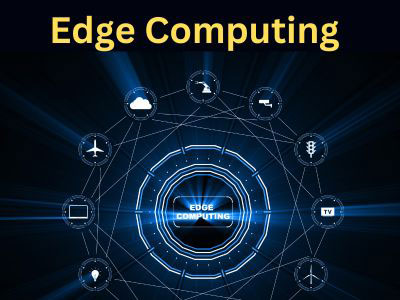Key Takeaway
Fog computing is a decentralized computing structure that extends cloud computing to the edge of the network. It processes data closer to the source, similar to edge computing, but can involve multiple layers of data processing.
Unlike edge computing, which processes data at the device level, fog computing involves intermediary devices like routers or gateways. It reduces latency and bandwidth usage, improving efficiency for IoT devices.
Defining Fog Computing and Its Role in the Cloud Ecosystem
Fog computing is often discussed alongside edge computing, but it’s a distinct concept. While edge computing focuses on processing data at the network’s edge, fog computing operates in a layered architecture, processing data at the edge and within the network itself. It acts as an intermediary between edge devices and the cloud, helping distribute computing tasks more effectively. In the cloud ecosystem, fog computing reduces the amount of data that needs to be sent to centralized data centers, thus improving efficiency and minimizing delays. It is especially useful in scenarios where low latency is critical, like industrial IoT and smart cities.

Differences Between Fog Computing and Edge Computing
Fog computing and edge computing are both distributed computing models designed to bring data processing closer to the source, but they differ in scope and implementation. Edge computing involves processing data directly on the device or nearby device, such as sensors, wearables, or vehicles, at the “edge” of the network. This reduces the need for cloud computing and minimizes latency, enabling real-time decision-making.
Fog computing, on the other hand, extends this idea to a hierarchical system, where data is processed not just on the edge device, but also at intermediary nodes like local routers or gateways within the network. This creates a layer between the edge and the cloud, ensuring better scalability, load balancing, and distributed computing. While edge computing operates on localized devices, fog computing takes advantage of a broader network structure, allowing for data filtering, aggregation, and analytics at the network’s edge before sending it to the cloud.
The main difference lies in the processing location: edge computing is more device-centric, and fog computing includes network nodes to distribute tasks more evenly. Both reduce latency but fog computing offers a more scalable solution when there’s a need for complex processing across multiple devices.
You May Like to Read
Benefits of Fog Computing for Data Processing
Fog computing brings data processing closer to the edge, allowing for more efficient handling of data without relying on distant data centers or cloud servers. By distributing computing tasks across local fog nodes, it enhances the overall speed and efficiency of data processing. One of the primary benefits of fog computing is its ability to support real-time analytics. Unlike traditional cloud computing, which may suffer from delays due to distance and bandwidth limitations, fog computing processes data locally, reducing latency and enabling faster decision-making, which is crucial for applications such as autonomous vehicles and industrial automation.
Another key benefit is improved scalability. Fog computing supports distributed networks, allowing businesses to scale operations across multiple nodes, which improves flexibility. As more IoT devices are integrated into networks, fog computing offers a way to handle the massive influx of data without overburdening central systems. This local processing also reduces the strain on cloud infrastructure, enabling organizations to scale their operations more easily.
Examples of Fog Computing in IoT Systems
Fog computing extends edge computing by enabling data processing closer to the network’s edge, but in a more distributed manner. It complements IoT systems by managing large volumes of data generated by IoT devices without overwhelming the cloud. In a smart city context, fog computing can be deployed for real-time traffic monitoring. IoT sensors in vehicles and traffic lights communicate with fog nodes, processing traffic patterns locally to optimize signals and reduce congestion. This minimizes the need to transmit large data volumes to the cloud, enhancing network efficiency and latency while improving real-time decision-making. Agriculture systems benefit similarly, with fog computing enabling precision farming by analyzing sensor data for soil moisture, temperature, and crop health without relying solely on distant cloud servers.
Challenges in Implementing Fog Computing Solutions
Implementing fog computing solutions comes with several challenges, starting with network complexity. The deployment of fog nodes across distributed locations requires seamless communication between them, which can be difficult to maintain. This complexity is compounded by the need for real-time data processing, requiring robust connectivity and low-latency networking. Additionally, organizations often face security concerns due to the distributed nature of fog nodes, as each node becomes a potential entry point for cyber threats.
Another challenge is managing data consistency across all fog nodes. Ensuring that data is synchronized and updated in real-time is crucial for effective decision-making and analytics. As fog computing solutions scale, maintaining consistency becomes more complex, particularly in highly dynamic environments. Furthermore, there are regulatory and compliance challenges in industries like healthcare or finance, where data privacy and protection are paramount.
Lastly, the cost of fog computing solutions can be a significant barrier. Setting up and maintaining fog nodes requires specialized hardware and software, leading to increased operational expenses. Organizations must weigh these costs against the potential benefits of fog computing, such as reduced latency and localized processing. Despite these challenges, fog computing offers promising solutions for real-time data processing in edge applications.
Conclusion
In conclusion, fog computing serves as a bridge between cloud computing and edge computing by bringing processing, storage, and networking closer to the devices at the network’s edge. This decentralized approach enhances the real-time processing of data, reduces latency, and ensures better bandwidth utilization. It is especially beneficial for IoT applications where data needs to be processed quickly at the source, improving system efficiency and response times. As industries continue to adopt IoT and edge computing, fog computing will remain essential for enabling faster, more efficient data management.
